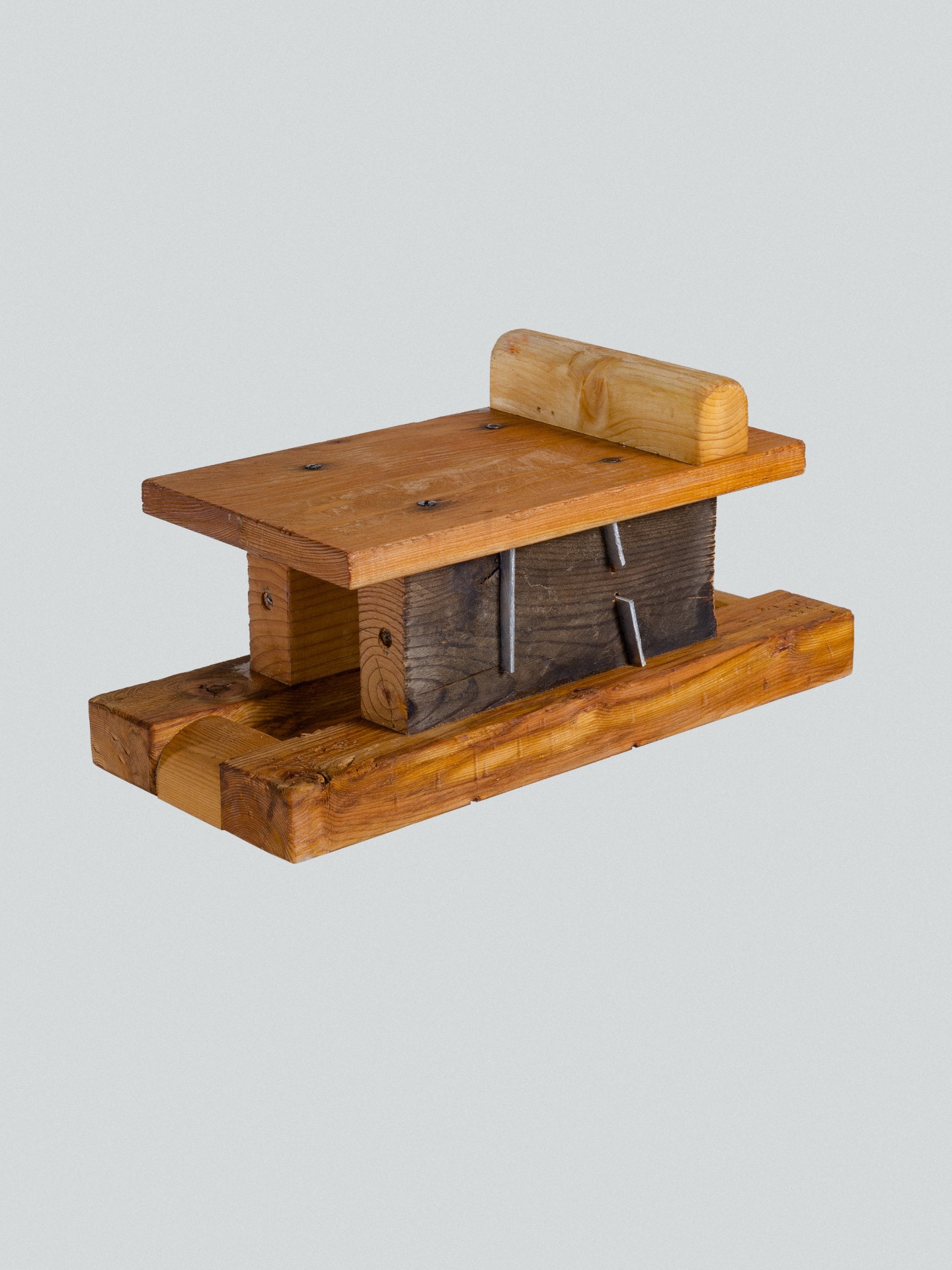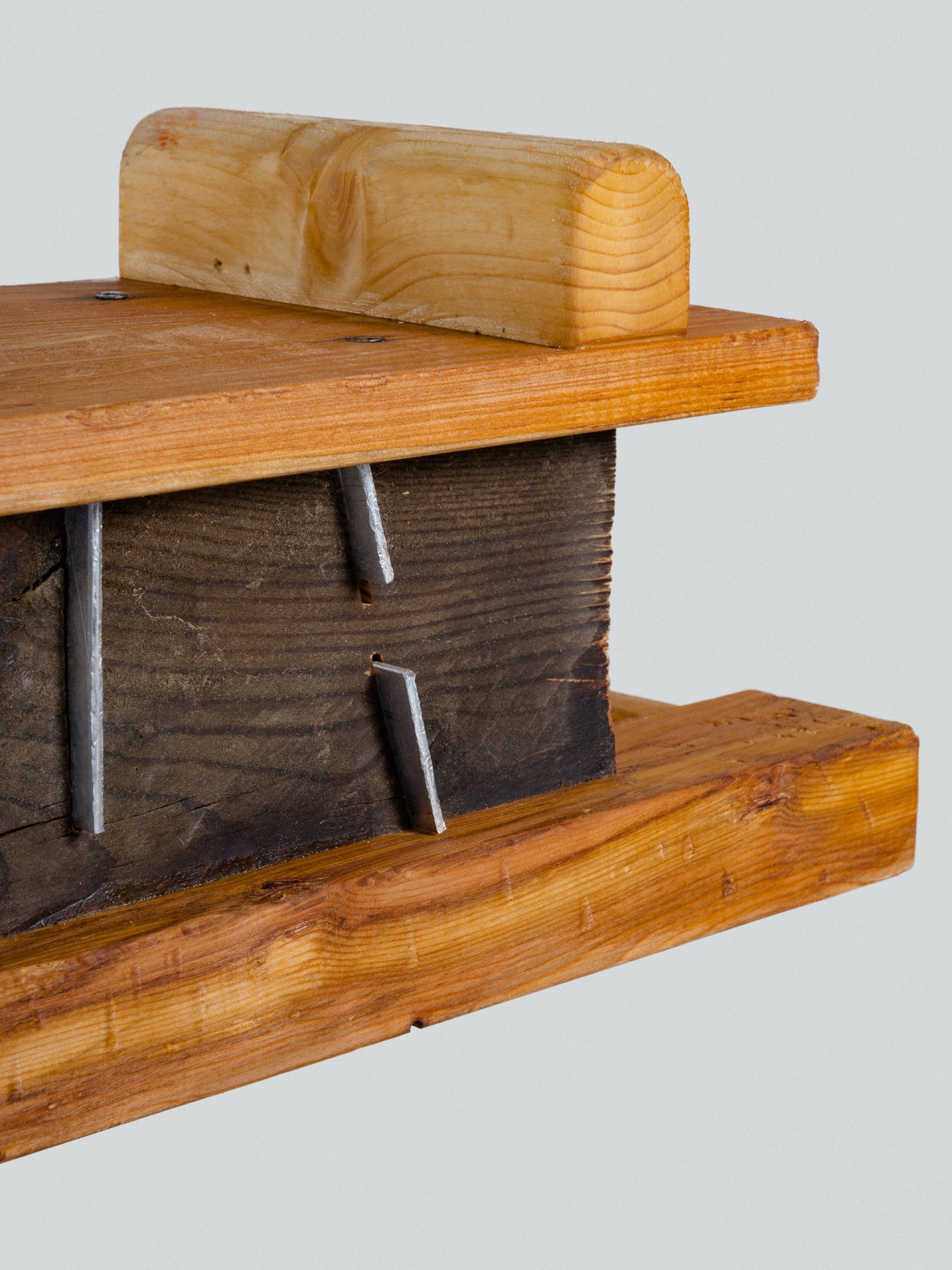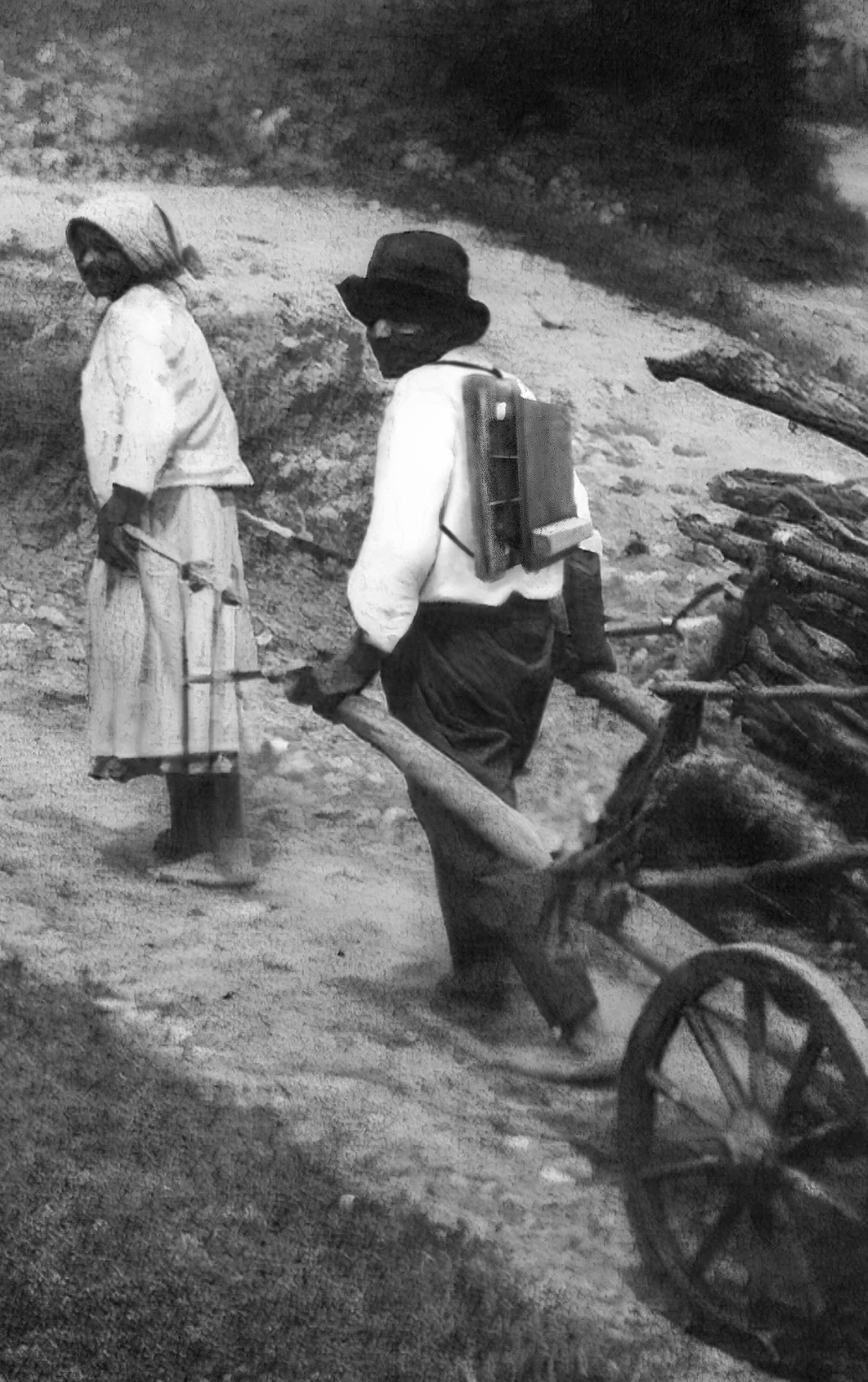In the first half of the 18th century in Hungary, the acacia was one of the tree species deliberately planted in early forestry. This species has adapted perfectly to the local climate, which is why the number of trees increased drastically in that period. In the central and southeastern regions of the Great Plain, it proved to be excellent for binding sandy soil, thus it soon became an integral part of the forests found there. At the same time, the acacia tree began to be used for more and more purposes. One of the consequences was the birth of an object called the “chidder-puller”, which can now only be found in traditional country houses and old barns.
The “chidhuller” was a common occupation amongst men, who usually worked in pairs, like lumbermen in the regions of the North-Central Mountains in the 18th-20th centuries. The forester often took his wife with him to work in the nearby forests, although only men went to more distant areas. It developed similarly in the southern areas, although here – derived from the word “chid” – the name “chidder” was used for the acacia saplings that also spread in the wild. Acacia was not considered a particularly valuable or noble type of tree, which is why at that time, forest workers present in large numbers could harvest the overgrown acacia trees without any permission. Similar to northern customs, groups of forest workers usually settled in larger forests to produce a sufficient amount of wood for the nearby villages in only a few days.
The use and weaving of willow, hazel, or other canes already had a tradition; in the 19th and 20th centuries, cane-braided wall structures were typical in Hungary. They built houses, barns, granaries, and even churches or other public buildings with cane walls. Although compared to other bushes or trees, its scope of use was narrower due to its rigidity, the use of acacia canes also became typical. However, this required a new tool, as the leaves and larger spines on the canes made transportation quite difficult. This new tool is today known as the “chidder-puller”, through which the cut canes were pulled through, thus pulling off the unusable parts. The 50-70 cm long, low-maintenance tool with iron blades was usually made of heavy wood. The object was transported to the forest on foot or a chariot, together with the carving axe, the hacksaw, and the draw knives. These basic woodworking tools were used in nomadic conditions in the forest and returned to the village when the work was done.
A 18. század első felében az idegen eredetű, de hazánkban azóta is nagy számban jelenlévő akác a korai erdőgazdálkodás egyik tudatosan nagy számban telepített fafajtája volt. Az akác tökéletesen alkalmazkodott a helyi klímához, így évről évre drasztikusan növekedett az országban jelenlévő faállomány. Az Alföld középső és délkeleti régióiban a homokos talaj megkötésére kitűnően alkalmasnak bizonyult, ezért hamarosan az itt fellelhető erdők szerves részévé vált. Ezzel egyidőben az akácot egyre több célra kezdték felhasználni, ennek egyik következménye volt a ma már csak hagyományőrző tájházakban és régi pajtákban elszórtan felfedezhető tárgy, a cséderhúzó megszületése.
A cséderhúzó kifejezés ebben a formájában ugyancsak a dél-alföldi területeken jelent meg először, eredete számos ma is ismert szóból fakad. Az első felének (cséd) legközelebbi rokona a cser, amely már az ómagyar nyelvben is használatos volt. A cser [cser < ómagyar: cser < dravida: serru (cserje) < seri, seru, serru (sűrű)] eredetileg sűrű vad, apró fás és bokros területeket jelentett, ebből született a ma használt cserje kifejezés.
A fa felhasználáshoz köthető cserhántás az Északi-középhegység vidékein a 18-20. század között számos munkalehetőséget nyújtott a férfiaknak, akik általában párban dolgoztak, mint a favágók. Sokszor előfordult, hogy a feleségét is magával vitte a cserhántó a közeli erdőkbe dolgozni, azonban távolabbi területekre csak a férfiak mentek. Hasonlóan alakult ez a déli területeken is, habár itt – a cser szóból eredően – a cséder megnevezést a vadon is terjedő és erőszakosan teret hódító akáccsemetékre használták. Az akácot nem tartották különösebben értékes vagy nemes fafajtának, ezért ebben az időben a nagy számban jelenlévő erdőmunkások bármilyen engedély nélkül termelhették ki a túlnövekedett akácosokat. Az északi szokásokhoz hasonlóan általában többtagú férfi erdőmunkás „bandák” telepedtek ki nagyobb erdőkbe, hogy pár nap alatt kellő mennyiségű faanyagot termeljenek ki a közeli falvak számára.
A fűz, mogyoró vagy egyéb vesszők felhasználásának és fonásának ekkor már nagy hagyománya volt. Magyarországon a 16-19. század között a vesszőfonatú falszerkezet jellemző volt. Vesszőfallal építettek lakóházat, csűrt, istállót, ólat, kukoricagórét, gabonást, sőt templomot és más középületetis. Az akácvessző-kitermelés is jellemző lett, habár más bokrokhoz vagy fákhoz képest felhasználási köre szűkebb volt merevsége miatt. Ehhez azonban új eszközre volt szükség, hiszen a vesszőkön található hosszúkás levelek és nagyobb tüskék a szállítást
igencsak megnehezítették.
Ezt a problémát oldotta meg a cséderhúzó, melyen a levágott vesszőket áthúzták, lerántva ezzel a használhatatlan részeket. Általában valamilyen nehéz fából készült a vaspengékkel ellátott, 50-70 cm hosszú, kevés karbantartási igénnyel rendelkező eszköz. Ezt a tárgyat a faragó toporral, a cserfűrésszel, a karajfűrésszel és a vonókéssekkel együtt gyalogosan vagy szekérrel az erdőbe szállították. Ezeket az alapvető famegmunkálási tárgyakat nomád körülmények között használták az erdőben, a munka végeztével pedig visszatértek a faluba.


